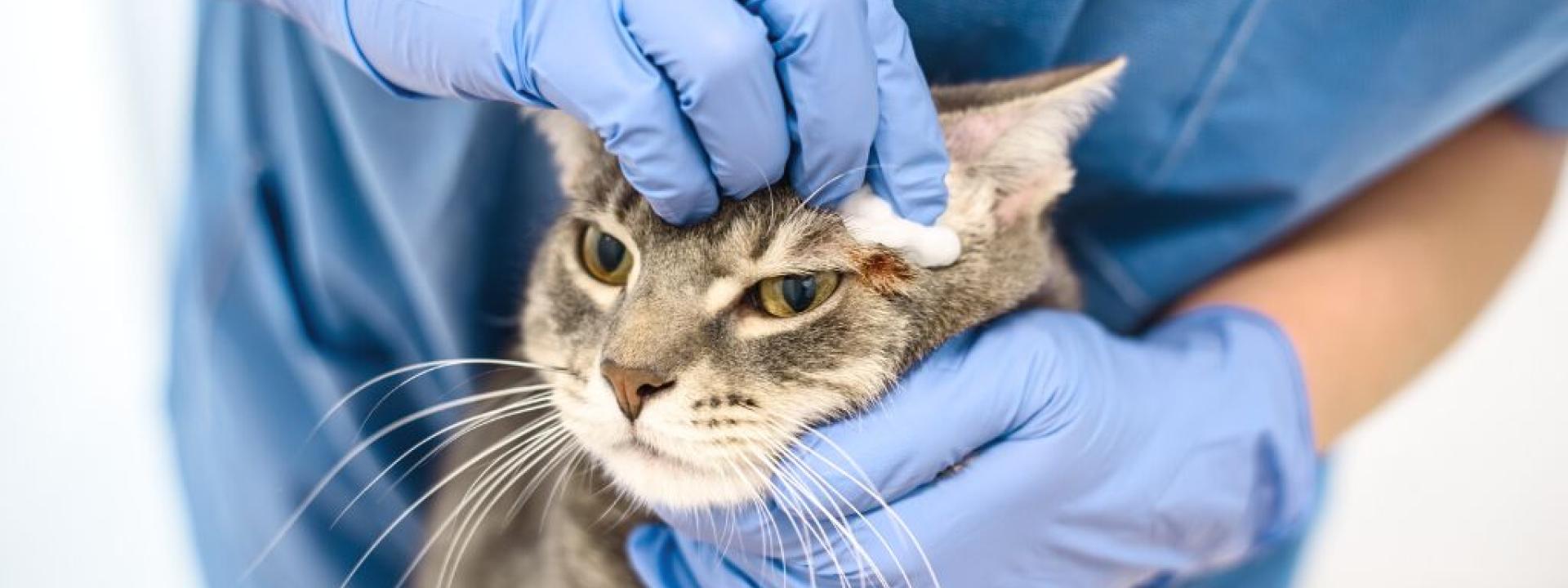Skin conditions in cats can be an extremely uncomfortable experience, impacting a cat’s quality of life due to the extreme itchiness they cause. Often, a skin issue is a secondary condition to a more serious underlying medical condition, so a visit to your veterinarian is critical for a thorough examination and diagnostics to understand precisely what is causing the skin issue. If your cat has been scratching to the point of hair loss and you suspect a skin condition, your first instinct was likely to go online to search for information. At Veterinary Medical Center, we work extremely hard to bring you the accurate information you need, so we’re glad you found us. We've taken the most frequently asked questions about cat dermatology and answered them as thoroughly and accurately as possible so you have the information you can trust to get your cat the relief they deserve.
If you’re looking for a highly trained veterinarian in Union City, CA, we’d love to see your cat for a skin exam, so please call us at (510) 441-8500.
What is cat dermatology?
Cat dermatology is the study of skin diseases in felines. There are a variety of skin conditions and diseases that can affect a cat, from flea allergies to skin cancers.
How do skin conditions impact the health and well-being of my cat?
Cats' skin conditions can cause severe discomfort, with constant scratching and tearing the hair out of their skin. Even a low-grade itch from a skin condition, where a cat is only occasionally scratching their ears and shaking their head, can be uncomfortable. The discomfort significantly impacts their quality of life, especially if secondary skin infections develop due to itching. In some cases, skin infections can even make your cat lethargic.

What are some signs and symptoms of skin issues in my cat?
There are several visual symptoms of skin issues in cats, and they often present similarly as they do in dogs and humans.
Signs and symptoms of a feline skin condition include:
- Severe itching
- Hair loss and bald spots
- Red, irritated skin
- Skin inflammation
- Rashes
- Crustiness and scaling
- Skin lesions and bumps
An allergy is the most common underlying cause of a cat's skin condition, but infectious diseases such as ringworm or feline dermatosis can also cause skin conditions. Ringworm is a highly-contagious fungus that both cats and humans can contract. Skin mites can also affect cats, which aren’t common but can be quite problematic when that occurs. Some mites are related to an unhealthy immune system, while others are more contagious and itchy. The most common mites seen in younger cats are ear mites, which are tiny mites that crawl around in the ears and bite the skin, causing severe discomfort. There are also skin cancers in cats, which can have a variety of appearances.
Why is it important to avoid self-diagnosing skin conditions in my cat?
You must avoid self-diagnosing a skin condition in your cat because there are a variety of presentations of skin conditions, and the appearance of skin lesions is often not definitive. A particular presentation doesn't necessarily mean a certain disease; therefore, accurate diagnosis requires a systematic approach from a veterinarian who will look at the symptoms and your cat’s history before conducting basic diagnostics. In addition, addressing skin disease and itching can be quite complicated. There are not many effective over-the-counter products to help your cat — and some over-the-counter medications can actually be dangerous. Always err on the side of caution regarding feline skin conditions, and get them to your veterinarian as soon as possible.
How soon should I bring my cat to see a veterinarian for issues with their skin?
As with most medical concerns with your cat, the sooner, the better when it comes to getting them to a veterinarian. Cats are often miserable, or at the very least uncomfortable, when they have certain skin diseases. Quick intervention is essential for their quality of life. In addition, some skin conditions can have detrimental effects on the body, including hyperthyroidism which is common in older cats. What may look like a primary skin issue can be a severe underlying medical condition. Being able to assess and address those things early is always better for your cat.
How will a veterinarian diagnose skin issues in my cat?
Diagnosing skin issues in cats isn’t necessarily a cookie-cutter approach. Your veterinarian will visually assess your cat’s hair loss, skin lesions, ear problems, and any other signs of a skin condition. The starting point for diagnostics is typically a skin and ear cytology, which involves getting samples from the skin in the ears, putting them on a microscope slide, staining them, looking under the microscope, and checking for secondary infection. The word “secondary” is critical because it's not common for cats or dogs to have primary skin infections. Skin infections are almost always the result of something else with their health, so understanding the skin infection is essential.
If your veterinarian suspects ringworm, that requires a specific culture which can take a few days to return results, and certain types of suspected skin cancers require skin biopsies. If allergies are to blame for your cat’s skin condition, your doctor will likely recommend a very specific food trial or therapeutic diet to identify the food causing the issue. Environmental allergies can also cause skin conditions, which could mean a visit to a board-certified dermatologist for allergy testing to determine what exactly your cat is allergic to. If an environmental allergy is a diagnosis, your veterinary dermatologist can create a serum to directly target the allergy and help alleviate the symptoms when exposed.
What treatment options are typically recommended for cat dermatology issues?
In terms of treatment options, there are several categories. If there's a secondary infection, depending on whether it's bacteria or yeast, we will treat that with antimicrobials or a combination of systemic medications — either oral or injectables that get into the bloodstream in addition to topical antimicrobials. We treat ringworm with a specific anti-fungal therapy. If it's a food allergy, that requires a particular therapeutic prescription food. Environmental allergies, unfortunately, have no cure, so it's all about management to provide relief for your cat. Allergy testing and immunotherapy using a specific serum is the best management for environmental allergies. Skin issues caused by fleas require flea prevention. In addition, omega fatty acid supplements are often helpful for skin diseases.

Are feline dermatology problems curable?
Some feline dermatology issues are curable, and others are not. Although a frustrating process, we can typically cure fungal diseases like ringworm and mites. Skin cancer cures depend on the type of cancer, how quickly it was addressed, and how aggressive it is. A biopsy and pathology report will tell you and your veterinarian if it’s curable or not.
Flea allergies leading to skin issues are very easily managed with year-round flea prevention, avoiding the allergy and resulting in skin complications entirely. We can manage other allergies leading to skin conditions but not necessarily cure them. For example, we can control a food allergy by identifying the food and eliminating it from your cat’s diet. The same goes for environmental allergies. Once we identify them, you can help your cat stay away from the cause, and immunotherapy lessens the reaction if you can’t avoid the environmental factor.
The Cornell Feline Health Center offers additional details about feline skin conditions. If you have further questions about cat dermatology, reach out to your veterinarian. If you live in or near Union City, CA, we’d love to see your cat if they’re showing signs of a skin condition, so please don’t hesitate to call us at (510) 441-8500 or email us at [email protected].

